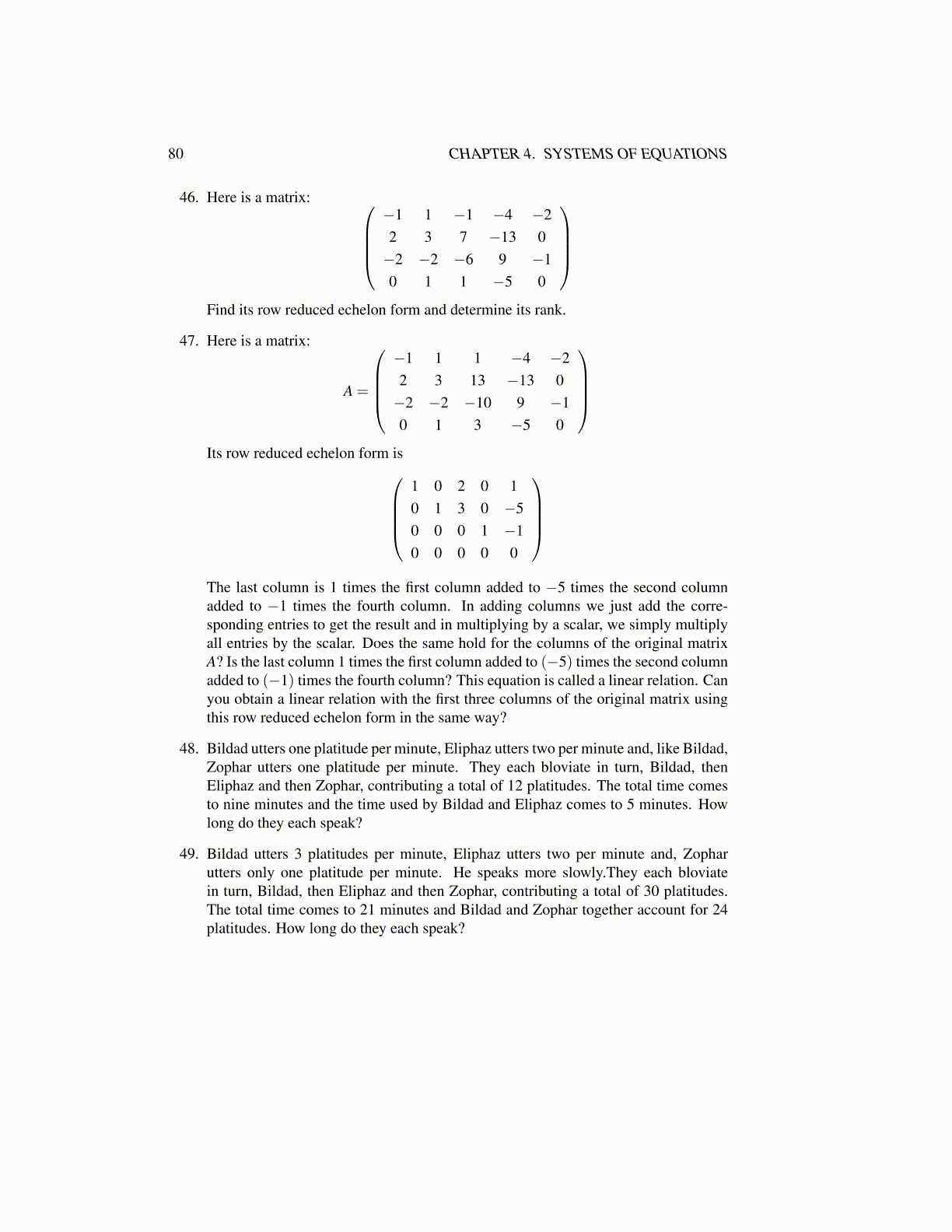
80 CHAPTER 4. SYSTEMS OF EQUATIONS
46. Here is a matrix: −1 1 −1 −4 −22 3 7 −13 0−2 −2 −6 9 −10 1 1 −5 0
Find its row reduced echelon form and determine its rank.
47. Here is a matrix:
A =
−1 1 1 −4 −22 3 13 −13 0−2 −2 −10 9 −10 1 3 −5 0
Its row reduced echelon form is
1 0 2 0 10 1 3 0 −50 0 0 1 −10 0 0 0 0
The last column is 1 times the first column added to −5 times the second columnadded to −1 times the fourth column. In adding columns we just add the corre-sponding entries to get the result and in multiplying by a scalar, we simply multiplyall entries by the scalar. Does the same hold for the columns of the original matrixA? Is the last column 1 times the first column added to (−5) times the second columnadded to (−1) times the fourth column? This equation is called a linear relation. Canyou obtain a linear relation with the first three columns of the original matrix usingthis row reduced echelon form in the same way?
48. Bildad utters one platitude per minute, Eliphaz utters two per minute and, like Bildad,Zophar utters one platitude per minute. They each bloviate in turn, Bildad, thenEliphaz and then Zophar, contributing a total of 12 platitudes. The total time comesto nine minutes and the time used by Bildad and Eliphaz comes to 5 minutes. Howlong do they each speak?
49. Bildad utters 3 platitudes per minute, Eliphaz utters two per minute and, Zopharutters only one platitude per minute. He speaks more slowly.They each bloviatein turn, Bildad, then Eliphaz and then Zophar, contributing a total of 30 platitudes.The total time comes to 21 minutes and Bildad and Zophar together account for 24platitudes. How long do they each speak?